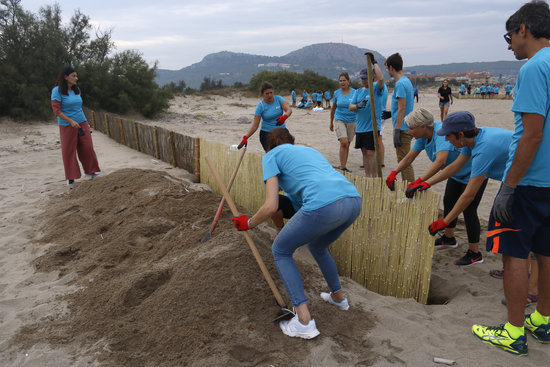Saving the Costa Brava's sand dunes
Sedimentary traps installed to prevent sand being lost to the sea

New sedimentary traps were installed at the Pletera beach, in L'Estartit, Costa Brava. They will help to retain sand and hasten dune formation, after concerns that damage to dunes would continue to disrupt the natural state of the beaches.
Mapi Carabús, Montgrí Natural Park expert, explained that the dunes and beach "go hand in hand in the same natural dynamic."
Dunes may become more compact when visitors step on them. When sand dunes are destroyed like this, additional sand has to be brought in because the sea "takes it away."
For this reason, Carabús believes it is important to limit beach visitors to avoid destroying the sand dunes.
50 or so Ferrer lab employees helped to add five new sedimentary traps - these constitute wooden fences of around half a meter in height, and five or ten metres in length.
They are placed in the ground, and they accumulate sand and sediment behind them, so as to form the beginnings of a small dune.
This offers hope that, when the “natural dynamic” between sand and beach is restored, the beaches will not “need extra investments” such as sand installations at the beginning of every season.
Carabús also highlights that the installation of “beacons” to block off zones to conserve the dunes has proved effective.
A social initiative
Workers from the organization that led the initiative, Ferrer laboratories, explained that although “activities are usually more fun”, they felt that “there is no activity more fun than helping others.”